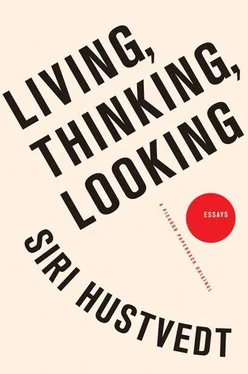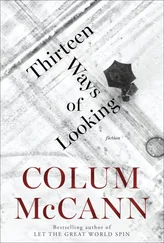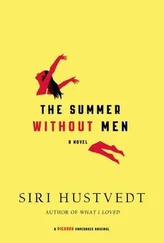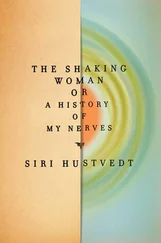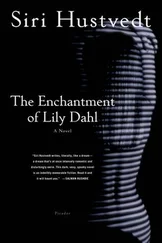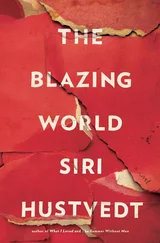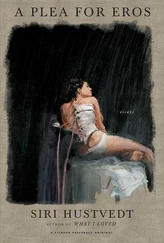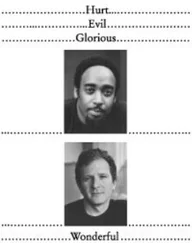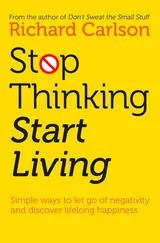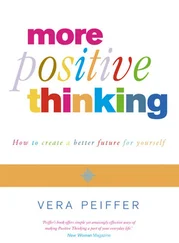I couldn’t bear to let my baby cry in the night, so I didn’t. For years I read to my daughter while she drifted off to sleep, her fingers in my hair. As she grew older, I continued to read to her and, after I had said good night, she would lean over and switch on a tape of Stockard Channing reading one of the Ramona books by Beverly Cleary. The tape had become a transitional object —a bridge between me and sleep. D. W. Winnicott coined this term for the things children cling to — bits of blanket or stuffed animals or their own fingers or thumb — that occupy a space between the subjective inner world and the outside world. These objects are especially necessary at bedtime when, as Winnicott writes, “From waking to sleeping, the child jumps from a perceived world to a self-created world. In between there is need for all kinds of transitional phenomena — neutral territory.” 11I vividly remember my sister Asti’s ragged blanket she called her “nemene.” One of my nieces used three pacifiers— one to suck and two to twirl. How she loved her “fires.”
There is no reason we should expect young children to enter the nocturnal darkness of sleep and dreams without help. Parental rituals and transitional objects serve as vehicles for making the passage and, indeed, to a child’s ability eventually to comfort himself. Freud was surely right about the strangeness of preparing for bed and about the fact that the human mind is undressed in sleep. The so-called executive part of the brain — the bilateral prefrontal cortex — is largely quiet, which probably accounts for the disinhibition and high emotion of many dreams. It is not always easy to go to the region that lies beneath wakefulness, to relinquish the day and its vivid sensory reality. And for a small child the most vital part of that reality is Mother and Father, the beloveds she must leave behind as she drops into the very private land of sleep.
2010
IT IS A PECULIAR TRUTH that I see far less of myself than other people do. I can see my fingers typing when I look down at them. I can examine my shoes, the details of a shirt cuff, or admire a pair of new tights on my legs while I am sitting down, but the mirror is the only place where I am whole to myself. Only then do I see my body as others see it. But does my mirror-self really represent my persona in the world? Is that woman who gives herself the once-over, who checks for parsley in incisors to avoid a green smile, who leans close to study new wrinkles or the red blotches that sometimes appear on her rapidly aging countenance a reasonable approximation of what others see? I do not witness myself as I talk and gesture emphatically to make absolutely sure my point has been made. I do not see myself as I stride down the street, dance, or stumble, nor do I know what I look like when I laugh, grimace, cry, or sneer. This is no doubt a blessing. Were I to see myself in medias res, my critical faculties might never shut down, and I would barely be able to lift a finger without crippling self-consciousness.
Instead of actually seeing ourselves, we walk around with an idea about ourselves. We have a body image or a body identity . This is the conscious notion of what we look like. I’m pretty or ugly, fat or thin, feminine or masculine, old or young. Everyone knows that we can be wrong about our body image. We have all met thin people who believe they are fat and old people who think they have the bodies of thirty-year-olds and dress accordingly. I confess I am sometimes surprised when I regard my own face in photographs. “Good heavens!” I say to myself. “Is that what you look like now? Are you really so old ?” At other times, I find myself aging admirably. “You’re not so bad for fifty-six. You’re hanging in there.” But then photographs, those documents of an instant, don’t capture a person in motion. They are static, and we are not. Nevertheless, I think my body image sometimes lags behind my real body.
If body image is what we think we look like, style is meant to express who we think we are, and since we spend most of our lives dressed, not naked, clothes can efficiently announce something about a person’s character. Whether sober and sleek, humorous, sweet, modest, loud, or dangerous — they serve as an indication of personality. When I put on my clothes, I hope that the dresses and trousers and blouses and coats and shoes and boots and scarves and purses and all the rest of the sartorial paraphernalia I select will speak for me, will suggest to the world an idea I have about myself. It is interesting to ask how these ideas come about. I have learned after almost thirty years of marriage that my husband regards any shirt with a shiny fabric (even the barest sheen) as anathema to his true character. My sister Liv wears a lot of jewelry and she looks wonderful in it. I have sometimes tried to imitate her, but inevitably take it all off and leave on what I always wear — earrings. A lot of jewelry just isn’t “me.” But what is this me-ness about? Where does it come from?
If every person has an idea about garments that are him or her, most of us also have an ideally dressed self. When it comes to wearing clothes, idea and ideal intersect; the real and the imaginary inevitably come together. In my life, I have mostly found my ideal garments in the movies. I have a great weakness for those gleaming images of manufactured glamour and sophistication filmed on glorious Hollywood sets with monumental white staircases, billowing draperies, and sparkling chandeliers. How I have loved sitting in the dark and watching a world in which every suitcase is weightless and even poor shopgirls are as astutely attired as a chic Frenchwoman on the Champs-Élysées.
I believe it all started with a Walt Disney film, Pollyanna, starring Hayley Mills. Based on a revoltingly saccharine best-selling novel published in 1913, this movie captivated me entirely. I was only five when it was first released in 1960, so I think I must have seen it some time later, but not much later. In all events, I identified myself completely with Hayley Mills in her white sailor suit with navy blue trim. (I had no idea then that my mother had spent a good part of her childhood in southern Norway dressed in the very same fashion, de rigueur for middle-class children in the 1920s.) In my young mind, the sailor dress must have been emblematic of the story: a relentlessly cheerful girl sweetens up one sourpuss after another until she has won over an entire town. I pined for a dress like that. I must have believed in it as a vehicle of transformation: in that dress, I too might become like the heroine, adored, simply adored, by every single resident of my own small town.
My fixation on marine garb ended, but my cinematic identifications did not. When I first saw Marlene Dietrich slouching down a stairway in a tuxedo in the 1930 film Morocco, I thought I would never wear a dress again, only men’s suits and smoking jackets. The sight of Lana Turner in a white turban in The Postman Always Rings Twice made me consider that form of headwear. Although turbans never worked, I do own a tuxedo. I am well aware that I look nothing like Dietrich in it, but I credit her for the inspiration. Perhaps my favorite films are Hollywood comedies of the thirties and forties. In those movies, the heroes and heroines are not only capable of finding their way to the end of an English sentence, they know how to banter. They know how to deliver a barb, fire off a witticism, and send a wry offhanded compliment. Their crackling dialogues are inseparable from their characters, characters that are also expressed, at least in part, by their clothes.
In the movies, I like to watch clothes in action — the flow of a dress as an actress moves across the floor, dances, or, better yet, runs. Near the end of It Happened One Night, Claudette Colbert, no longer a spoiled heiress, but leavened by her adventures on the road with that man of the people, Clark Gable, stands before the minister who is going to marry her to a frivolous playboy, the perfect movie sap, and, when asked if she will take this man to be her lawfully wedded husband, she vigorously shakes her head no-she-won’t, hitches up her immense train, and runs, a mile-long veil streaming behind her on the grass. It’s a great shot, one that has the punch of a vividly remembered image from a dream.
Читать дальше
